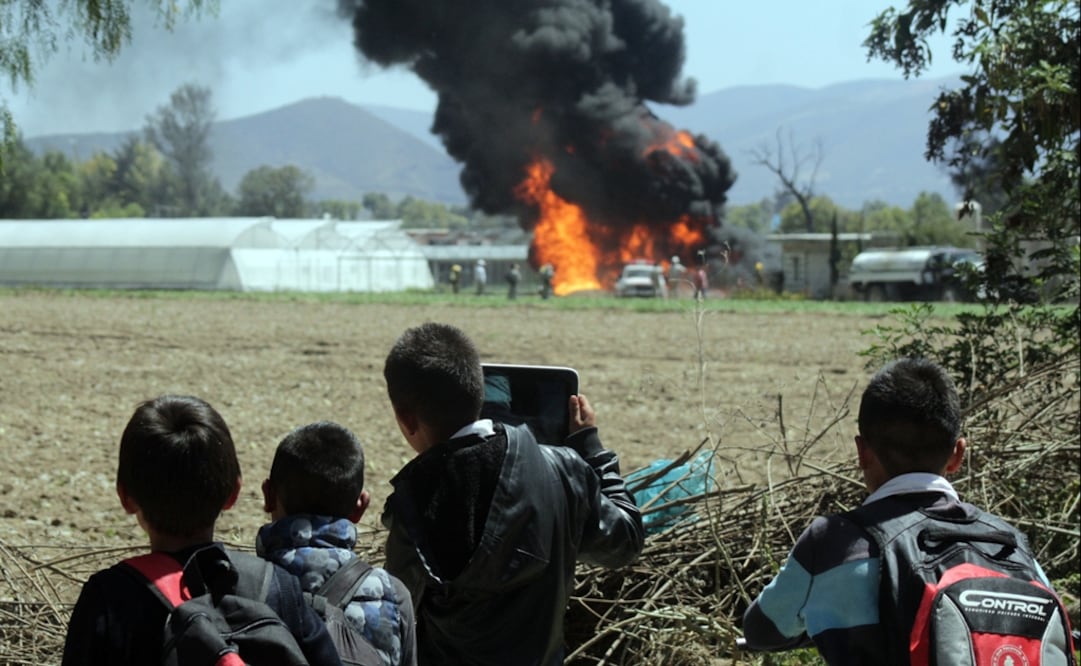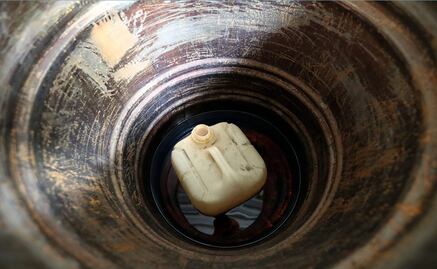Más Información

Lesli, la conexión entre el "Tren de Aragua" y "La Unión Tepito"; así fungía como negociadora entre los grupos criminales

Otorgan nueva prórroga a acusado de acoso contra la presidenta Claudia Sheinbaum; seguirá preso en el Reclusorio Norte

Frente frío 27 provocará temperaturas de hasta -15 grados en el país; SMN prevé lluvias y vientos fuertes

¿Vigilarán a las personas con el registro de celulares?; Sheinbaum explica para qué funciona esta medida
In spite of a decrease in illegal perforations on Mexican Oil (PEMEX) pipelines , fuel theft is still one of the oil company and Mexico’s main concerns.
During the first five months of 2018, there was a 52.6% increase in fuel theft by organized crime agents all along the company’s network compared to the same period last year. The purpose of these criminal organizations is the illegal extraction of any kind of hydrocarbons including gasoline, diesel, jet fuel, and even liquid petroleum gas (LP).
The criminals conducted an average of 43.2 illegal perforations every day between January and May. Last year, there were only 28.3 perforations on average.
The total amount of perforations made on the pipeline network between January and May was of 6,530 , which is 2,252 more than the perforations made on the same period last year.
The number of fuel thefts reported on these first five months shows that the illegal activity is conducted at a distance of barely 2.6 kilometers between perforations on PEMEX’s extensive pipeline network.
Last year, they kept an average distance of 3.97 kilometers between each perforation, which shows an alarming increase of crime in the country, more so in specific regions where these pipelines abound. The state of Puebla is at the top of the list, with 1,025 perforations in total.
Next is Hidalgo, with 769; Guanajuato, with 758; Veracruz, 708; Jalisco, 612; The State of Mexico, with 590, and Tamaulipas, with 556.
These seven states concentrate most of the clandestine perforations, which means that almost eight out of ten of PEMEX’s fuel thefts occur on the pipelines spread across the surface of these states.
PEMEX has assured that “illegal perforations are not a problem in every state, but in very specific regions, which is why strategies are being outlined to contain these leaks through the use of technological tools.”
Thanks to these techniques, the company can assess geographical patterns of fuel theft and determine in which parts of the country it is most likely to occur, as well as “detecting areas where organized crime has a larger influence, in order to implement a patrol system and focus law enforcement on the most vulnerable municipalities.”
The oil company has acknowledged that strategies such as the use of pipelines built out of reinforced steel or the construction of reinforced concrete walls around the pipelines are impractical since the criminal organizations are quick to detect the reinforcement and move their operation to other territories.
On the cost of the stolen hydrocarbons, PEMEX stressed that such information was classified. “If we gave out that kind of information, the municipalities where these thefts occur would become seriously damaged. We could risk the life, safety, and health of law enforcement officials and civilians on the areas where these illegal activities are being conducted.”
If such information were to be disclosed, PEMEX would give away supply sources, quantities of hydrocarbons produced, sold, and stolen, sales database, structure costs, and overall losses due to the illegal activities , which “could discourage investment in stock securities.”
However, according to previous statements, the director of PEMEX, Carlos Treviño Medina , estimates that fuel theft represents a loss of around 30,000 million pesos for the company every year.
dm
Noticias según tus intereses
[Publicidad]
[Publicidad]











